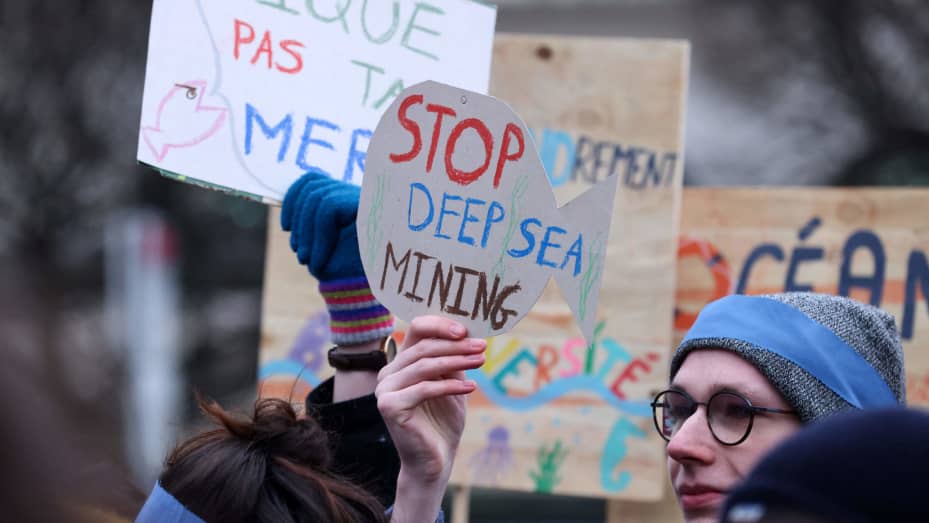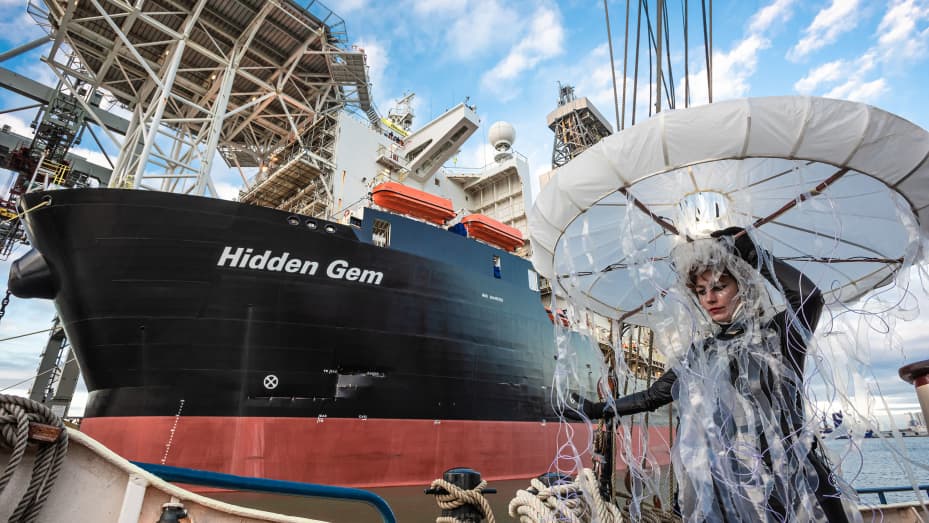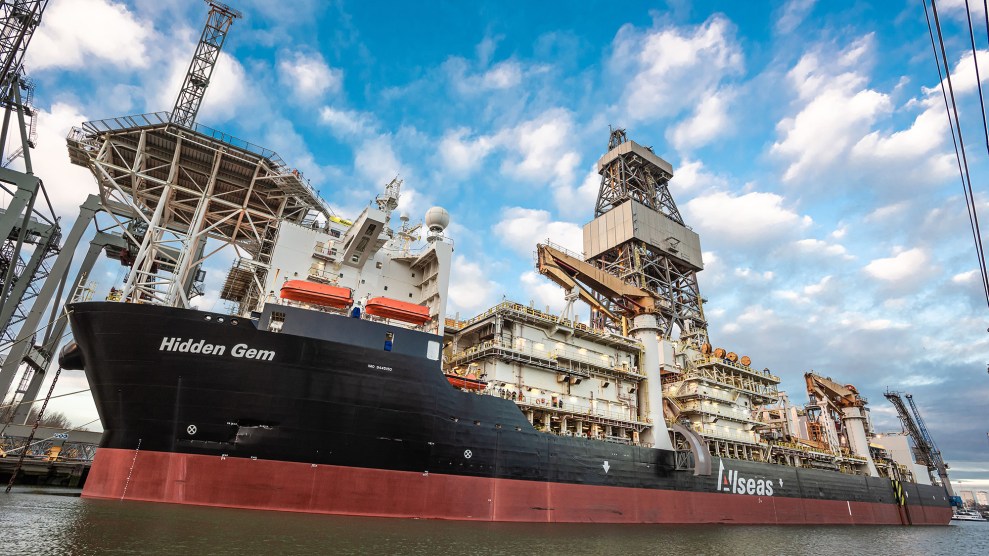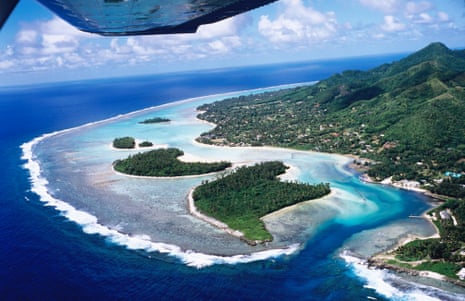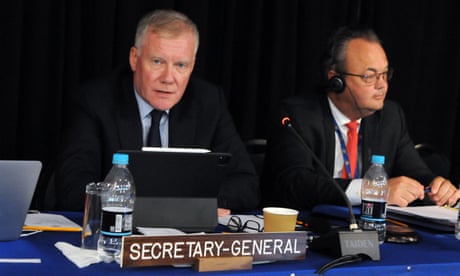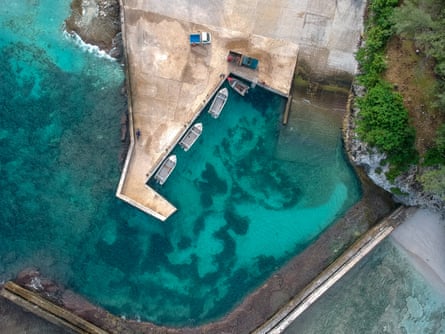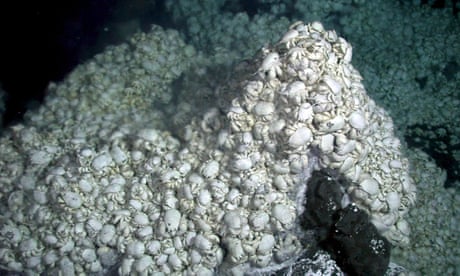A leaked video of ocean pollution during a trial by The Metals Company (TMC) has renewed calls for a ban on deep-sea mining.
By Joanna Chiu
Mon., Feb. 20, 2023
Brown-black discharge gushed out of a pipe from a hulking ship, dispersing murky clouds of sediment into the international waters of the Pacific Ocean.
The scene, captured in a video that’s garnered international attention, turned a spotlight to a controversial Canadian company that is poised to become the first in the world to extract critical metals from the ocean floor — with the help of a tiny island in Micronesia.
While The Metals Company (TMC) insists the incident during a mining trial was harmless, the spill has renewed calls for a global ban on deep-sea mining. Protesters in Vancouver recently waved placards that singled out TMC for its operations, and asked that delegates to a global ocean conference push for a ban.
The uproar has highlighted the tension between our world’s growing demand for metals that power renewable energy technologies and the impact on the earth of pursuing them.
This month, Canada issued a surprise domestic moratorium on deep-sea mining and said international mining should only take place if regulators can ensure environmental protections.
But the federal government stopped short of weighing in on whether there should be a global ban.
“It’s a huge debate we’re having about how to responsibly produce batteries for electronic vehicles and other technologies for clean energy,” says Dr. Juan José Alava, principal investigator at the University of British Columbia’s Ocean Pollution Research Unit.
“But as metals or valuable elements from the land become scarce or more difficult to extract, more industries are looking to the ocean bottom.”
Speaking a day after the Natural Resources Canada statement, TMC chief executive officer Gerard Barron defended his company’s handling of the incident on the ship Hidden Gem and laid out his arguments for why the benefits of deep-sea mining would outweigh harm to marine life.
“It wasn’t toxic waste,” he told the Star. “It was water and nodules and sediment … We shut it off right away.” (In the mining trial, the company picked up nodules — potato-sized rocks containing metals such as cobalt, copper, nickel and manganese needed for batteries — but is not allowed to sell them commercially.)
:format(webp)/https://www.thestar.com/content/dam/thestar/news/canada/2023/02/20/why-has-a-canadian-company-partnered-with-the-tiny-island-of-nauru-to-fast-track-deep-sea-mining/_2nodule_collector_vehicle.jpg)
The International Seabed Authority, a United Nations body regulating mineral-related activities, said a preliminary assessment by its experts identified no threat of harm to the environment. But it was awaiting a more detailed report from TMC’s subsidiary, Nauru Ocean Resources Inc.
The video came from scientists who were part of TMC’s required team of experts to monitor mining trials, a Greenpeace spokesperson told the Star. The scientists shared the video with a group of NGOs including Greenpeace, and allowed Greenpeace to post the video and share with media. The scientists shared it with organizations but declined to speak with journalists, according to the spokesperson.
Barron objected to calling the video a “leak” from concerned scientists. “There were more than 200 people on board. We weren’t trying to hide anything,” he said.
Hundreds of international experts have questioned the company’s claims, saying the deep-sea environment is the least understood ecosystem in the world and that scientists simply don’t have enough data to understand the effects of using heavy machinery to hoover up nodules that took millions of years to form.
:format(webp)/https://www.thestar.com/content/dam/thestar/news/canada/2023/02/20/why-has-a-canadian-company-partnered-with-the-tiny-island-of-nauru-to-fast-track-deep-sea-mining/_3gerard_barron.jpg)
Sharing slides over a Zoom call, Barron displayed a map of the Clarion-Clipperton Zone, which spans 4.5 million square kilometres between Hawaii and Mexico. It is here where some of the world’s deep-sea mining companies are conducting trials in anticipation that the International Seabed Authority may soon announce a regulatory framework for projects to begin.
Barron pointed out an area near an edge of the zone. “In this section alone, where we’ve invested 90 per cent of our resources (hundreds of millions of dollars), there is enough metal to power 60 million mid-sized electric vehicle batteries,” he said.
“In this area, most life is under the sea floor, and those are very small organisms … Let’s look at it from a bigger perspective. Let’s not just think about the worms,” Barron said.
The longtime Australian investor, who works out of TMC headquarters in Vancouver, said he was drawn to deep-sea exploration for environmental protection reasons.
To him, the prospect of “picking up” nodules from the sea floor seemed far less destructive than mining on land, which is “threatening rainforests in the Philippines and Indigenous communities.”
Alava, from UBC, said the company should allow independent scientists to closely review all data and protocols related to the incident since video clips and TMC’s public statement may not tell the full story.
“Simply calling it an accident is unacceptable. We don’t know if it was human error, engine failure or machine failure,” he said. “When you have a lot of suspension of sediment, it can obstruct the feeding processes of marine life for quite some time.”
:format(webp)/https://www.thestar.com/content/dam/thestar/news/canada/2023/02/20/why-has-a-canadian-company-partnered-with-the-tiny-island-of-nauru-to-fast-track-deep-sea-mining/_5nodule.jpg)
It’s not only the prospect of future deep-sea mining that worries scientists, but existing activities such as offshore oil exploitation and natural gas drilling.
“A lot of research is still needed on whether we can use modelling tools to predict impact in the long term on seawater quality and marine biodiversity because there are more marine species being discovered every day.”
The concern is that we might lose unique marine species, ones which may have applications in medicine and technology before they are found.”
Newly discovered deep-sea creatures include a blind eel with transparent skin, deep-sea batfishes that are flat with beady eyes and a new species of spiderfish with large mouths, which dwell below the surface of the Indian Ocean.
TMC pairs up with Nauru
While 22 different companies have deep-sea mining exploration contracts from the ISA, a consensus among industry observers is that TMC and its subsidiaries are clearly in the lead. Barron confirmed TMC could start mining as early as next year, pending regulatory approvals.
The imminent legalization of deep-sea mining projects is connected to the actions of Barron’s company, too.
:format(webp)/https://www.thestar.com/content/dam/thestar/news/canada/2023/02/20/why-has-a-canadian-company-partnered-with-the-tiny-island-of-nauru-to-fast-track-deep-sea-mining/_4hidden_gem_ship.jpg)
Since 2011, TMC has partnered with the tropical island nation of Nauru, which has a population of 12,500. The Canadian company’s wholly owned subsidiary, Nauru Ocean Enterprises, is registered in Nauru. Nauru acts as the firm’s official state sponsor.
Since deep-sea mining in international waters is not allowed because no regulations exist to govern the industry, Nauru issued a two-year deadline to the ISA in June 2020 to complete rules on deep-sea mineral exploitation. They invoked the so-called “two-year rule,” a treaty provision obliging the authority to try to finalize decisions within the deadline.
In response to Nauru and TMC’s gambit, more than 700 marine science and policy experts signed a letter calling for a pause to deep-sea mining. The experts said organisms in the deep sea support “ecosystem processes necessary for the Earth’s natural systems to function,” playing a key role in climate regulation and elemental cycling.
Major companies using advanced batteries, including Google, Samsung, Volvo and BMW, also joined a World Wildlife Fund call for a moratorium on deep-sea mining over fears of environmental impact.
A spokesperson for the ISA said the body has been discussing a draft exploitation regulation since 2019 and declined to comment on criticisms that Nauru’s deadline put pressure on the authority to rush the process.
“Discussions are progressing well, and ISA member states have agreed to continue their work with a view to reaching an agreement for the adoption of the exploitation regulations for July 2023, if possible.”
In his interview, Barron said his company was “utilizing” the two-year rule to ask for regulations to be completed by this year, before correcting himself to say it was Nauru that had invoked the treaty provision at the ISA.
“I think scientists will be very pleased when they see the volume and quality of the science we’ve been gathering this last decade,” Barron said.
If mining exploitation can go forward, it’s not clear how Nauru will benefit. Negotiations on future revenue sharing are underway but for now, TMC supports several local jobs including two Nauruan directors as well as initiatives such as university sponsorships, according to Barron. In the future, the company may pay taxes to Nauru. A representative for the Nauru government at the UN could not be reached for comment.
The whole situation has raised eyebrows, says Pradeep Singh, a specialist in ocean regulation and fellow at the Research Institute for Sustainability, Helmholtz Centre in Potsdam, who advises several governments on deep seabed mining and attends ISA meetings as an observer delegate.
“It is apparent that the company does not currently have a significant presence or meaningful and physical assets within the jurisdiction of Nauru so the question is raised as to whether it is appropriate for the country to be sponsoring this company,” Singh said.
“The pertinent question to ask is whether Nauru has effective control over the actual activities that are being carried out in the name of Nauru Ocean Enterprises Inc.,” he added.
TMC has struck similar deep-sea mining exploration partnerships with the countries of Tonga and Kiribati, in 2012 and 2015, respectively. “Without investment in this industry from private sector companies such as ours, developing nations would not otherwise have an opportunity to benefit from this new resource opportunity,” Barron argued.
Green Party supports ban
Besides questions over Nauru’s role, the crux of TMC’s reasoning for the relative environmental good of deep-sea mining is flawed, Singh says.
“The launch of a deep-sea mining industry doesn’t mean that traditional mining companies will drop out as competition. Rather, it is likely that terrestrial miners will compete, and in so doing, make matters worse by digging further and deeper, with lesser controls, more abuses just to gain a competitive edge,” Singh told the Star.
“So that really eats into the narrative that deep-sea miners claim to reduce terrestrial mining, whereby in reality, we will just see more of the old problems on land and new ones at sea.”
:format(webp)/https://www.thestar.com/content/dam/thestar/news/canada/2023/02/20/why-has-a-canadian-company-partnered-with-the-tiny-island-of-nauru-to-fast-track-deep-sea-mining/atop_the_nodules.jpg)
Elizabeth May, leader of the Green Party, is among those supporting an international ban on deep-sea mining and says Canada should take a stronger leadership role on such a position.
“I think we should ban deep-sea mining and that should be (Canada’s) position globally … It’s too big a threat to the climate, it’s a threat to biodiversity,” she told the Star.
“The question you have to ask is, ‘Do we need this?’ There are many ways to recycle metals and minerals. There are other places to be mining for lithium and other metals that are needed in electric vehicles. We have plenty of sources.”
In fact, international and Canadian companies are set to open several new lithium mines across Quebec, Manitoba and the Northwest Territories, in what is being dubbed the “White Gold Rush.”
Calls from countries for a pause on deep-sea mining now include several ISA Council members including Palau, Fiji, Samoa, Micronesia, New Zealand, Costa Rica, Spain, Germany, Panama and Chile. Last month, France became the first country to call for an outright ban on international deep-sea mining.
Barron chalks up the growing opposition from some governments to “narrative warfare” waged by activist groups who “think some magical cure will drop out of the sky” to meet renewable energy power needs.
“What we can do is be as transparent as possible. It’s an understandable question people have of, ‘How do we know what you’re doing deep in the ocean, thousands of miles from shore?’ We have a plan to set up a digital dashboard from our ships so regulators and stakeholders can get a near-live view of what we’re doing.”
With files from Marco Chown Oved

Joanna Chiu is a B.C.-based staff reporter for the Star. She covers global and national affairs. Follow her on Twitter: @joannachiu







